Welcome to RRPedia
Your Interactive Resource for EPA RRP Information
 Looking for accurate information about the EPA RRP rule?
Looking for accurate information about the EPA RRP rule?
RRPedia has been created by Shawn McCadden to help remodelers and others affected by the New EPA Renovation Repair and Painting Rule.
Please read RRPedia Use and Contribution Information before using or contributing to RRPedia.
You Can Browse For RRP Topics By Using The Tags List To The Right
Property Values and Equity Will Drop as a Result of the EPA RRP Rule
Posted by Shawn McCadden on Tue, Sep 07, 2010 @ 01:26 PM
Topics: Effects of the RRP Rule, Legal Considerations, Shawn's Predictions, Health Effects of Lead, Info for Landlords
Contractors and Subs Doing EPA RRP Work Will Need to Work Things Out
Posted by Shawn McCadden on Fri, Sep 03, 2010 @ 01:50 PM
Renovators And Their Trade Partners Will Need To Work Out And Agree On Who Will Do What
 Many contractors seeking to comply with the new EPA RRP rule are reporting concerns and challenges about finding trade partners who are willing to operate in compliance. Many renovators have told me that their trade partners have flat out refused to get their businesses and workers certified. Others have said their trade partners have committed to do so but have been slow to get it done due to the related costs. This has become quite an opportunity for some trade partners who have become certified and are marketing their certifications and services to general contractors. Several are actually offering to sub-contract the set-up, containment, demo, clean-up, cleaning verification and all related and required documentation for general contractors.
Many contractors seeking to comply with the new EPA RRP rule are reporting concerns and challenges about finding trade partners who are willing to operate in compliance. Many renovators have told me that their trade partners have flat out refused to get their businesses and workers certified. Others have said their trade partners have committed to do so but have been slow to get it done due to the related costs. This has become quite an opportunity for some trade partners who have become certified and are marketing their certifications and services to general contractors. Several are actually offering to sub-contract the set-up, containment, demo, clean-up, cleaning verification and all related and required documentation for general contractors.
A surprise to me, but also a no-brainer, was one electrician’s comment that he was having problems finding general contractors to work for who were in RRP compliance. Just as general contractors need to find new compliant trade partners to work for them, many trade partners are finding they can no longer rely on the volume of work they got in the past from contractors if those businesses choose to operate illegally.
Liability risks may also drive compliance. Renovators and their trade partners will need to work out and agree on who will do what. Here are a few examples:
-
 Who will take care of the notification requirements and documentation of same before the job begins? Under the rule, either can do so, but the business under contract with the property owner must maintain the required documentation.
Who will take care of the notification requirements and documentation of same before the job begins? Under the rule, either can do so, but the business under contract with the property owner must maintain the required documentation. -
If a trade partner or his employees are not certified renovators, will the renovator take on the responsibility of training and supervising the trade partner and or his employees? If so, at what level of risk? And, will either business’s insurance company allow such a relationship in the future?
-
Who will create the required renovation checklist?
-
Who will make sure the homeowner and or tenant receives a copy of the required renovation checklist after completion of the work?
-
In Massachusetts, who will maintain the required log documenting who comes in and out of the containment area during the course of renovations?
 The first time a RRP fine is accessed for a violation the finger pointing will start, causing one or both businesses to get serious about certification and compliance. The first time a renovator is sued by a client or neighbor as a result of the actions of a trade partner, the tactics used by the lawyers will cause both businesses to have a new and different outlook on RRP compliance, insurance coverage amounts and indemnification clauses. Attorney Mike Sams of Kenney & Sams, P.C., told me that failure of a business to be properly certified under the RRP rule on its own is evidence of negligence should a homeowner or insurance company take the contractor or trade partner to court. Taking this a little further, a contractor hiring a non-certified trade partner might also be considered negligence if that trade partner is allowed to work unsupervised.
The first time a RRP fine is accessed for a violation the finger pointing will start, causing one or both businesses to get serious about certification and compliance. The first time a renovator is sued by a client or neighbor as a result of the actions of a trade partner, the tactics used by the lawyers will cause both businesses to have a new and different outlook on RRP compliance, insurance coverage amounts and indemnification clauses. Attorney Mike Sams of Kenney & Sams, P.C., told me that failure of a business to be properly certified under the RRP rule on its own is evidence of negligence should a homeowner or insurance company take the contractor or trade partner to court. Taking this a little further, a contractor hiring a non-certified trade partner might also be considered negligence if that trade partner is allowed to work unsupervised.
 To confuse matters even further, under their definition of the difference between an employee and an independent contractor, the IRS says that a contractor cannot supervise the work or workers of a sub contractor. Doing so might result in the IRS labeling the sub contractor as an employee. If this were to happen it could trigger addition payroll taxes and workers compensation costs for the general contractor.
To confuse matters even further, under their definition of the difference between an employee and an independent contractor, the IRS says that a contractor cannot supervise the work or workers of a sub contractor. Doing so might result in the IRS labeling the sub contractor as an employee. If this were to happen it could trigger addition payroll taxes and workers compensation costs for the general contractor.
Topics: Effects of the RRP Rule, Production Considerations, Subcontractor Considerations, Legal Considerations, Shawn's Predictions, Insurance Considerations, Notification Considerations, Compliance Options, Documentation Considerations, MA RRP Lead Rules, Enforcement and Inspections
EPA Releases Penalty Guidelines for RRP Enforcement
Posted by Shawn McCadden on Thu, Sep 02, 2010 @ 05:54 PM
EPA Releases Penalty Guidelines for RRP Enforcement

The EPA recently released a new government document, titled the Consolidated Enforcement Response and Penalty Policy (ERPP), laying out enforcement and penalty guidelines for the Renovation, Repair and Painting (RRP) rule. The guidelines were announced in a memorandum from Rosemarie A. Kelly, Director of the U.S. EPA Waste and Chemical Enforcement Division, on Office of Enforcement and Compliance Assurance letterhead. The memorandum was dated August 19, 2010. The new policy was created because even though the RRP ruling was issued in April 2010, enforcement and penalty issues were not clearly defined and articulated in the ruling then.
In the memorandum, Rosemarie A. Kelly states:
"This Policy sets forth guidance for Agency officials to use in determining the appropriate enforcement response and penalty amounts for violations of Section 409 of TSCA resulting from failure or refusal to comply with provisions of the Pre-Renovation Education Rule (PRE Rule); Renovation, Repair and Painting Rule (RRP Rule); and Lead-Based Paint Activates, Certification and Training Rule (LBP Activities Rule). "
 I suggest you check out the introduction section in the policy document. Although the policy document is intended to provide guidelines for EPA Enforcement staff, the document introduction also states:
I suggest you check out the introduction section in the policy document. Although the policy document is intended to provide guidelines for EPA Enforcement staff, the document introduction also states:
"Enforcement staff should continue to make appropriate case-by-case enforcement judgments, guided by, but not restricted or limited to, the policies contained in this document”
View or download the August 19, 2010 memorandum
View or download the the enforcement guidelines document (ERPP).
View or download the Final RRP Rule with Preamble
View or download the amendment regarding the Opt-Out and Record Keeping Provisions
View or download the June 18, 2010 memo delaying enforcement of certain certification requirements
Topics: EPA RRP Rule Updates, EPA RRP Lead Rules, Legal Considerations, RRP for Dummies, Firm Certification, Enforcement and Inspections
Nervous Neighbors Will Keep EPA and MA RRP Renovators On Their Toes
Posted by Shawn McCadden on Wed, Sep 01, 2010 @ 01:17 PM
Uninformed and Nervous Neighbors Will Keep RRP Renovators On Their Toes
Awareness about lead and the potential effects of lead poisoning may not yet be prevalent with the public, but it will quickly increase. Renovators need to deal with this reality in a proactive way. Training and firm certification are great first steps. But, renovators will need to do much more to protect their businesses from potential challenges and liabilities triggered by an uniformed public.
First, the EPA’s public awareness campaign has already begun. The campaign warns people of the dangers of lead, but does little to make them aware of the RRP rule, the need to work with renovators who are certified in lead-safe work practices, and or how to find a certified firm to oversee work on the homes they live in. So, in effect, the campaign warns the public but leaves them basically ignorant of their options. (Click on the sample ad to the left to view in full size)
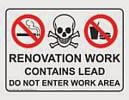 Second, the warning signs and barriers required to be put in place around exterior and common area containment areas will have a similar effect of raising concern. Unless properly educated about their options and about lead-safe work practices, neighbors and the parents of children attending child occupied facilities will again suffer from ignorance about lead. Many will likely react out of fear. This fear may potentially result in reporting a renovator and causing an inspection, even if the renovation work is being done within compliance.
Second, the warning signs and barriers required to be put in place around exterior and common area containment areas will have a similar effect of raising concern. Unless properly educated about their options and about lead-safe work practices, neighbors and the parents of children attending child occupied facilities will again suffer from ignorance about lead. Many will likely react out of fear. This fear may potentially result in reporting a renovator and causing an inspection, even if the renovation work is being done within compliance.
 Remember, as a business you are guilty until you prove yourself innocent at your own expense. An OSHA and or RRP inspector will likely be able to find at least one violation of some rule if they show up at one of your jobsites. Some inspectors may even feel it is their obligation to find a violation. The cost to defend yourself might be as high as the cost of any fines, so even if you win you lose. In Massachusetts, the Department of Occupational Safety (DOS) is already collaborating with OSHA regarding what to do if either finds a violation that should be referred to the other. Oh, and don’t forget those neighbors who have a bone to pick with your customer, have nothing else to do all day, and or are just plain paranoid.
Remember, as a business you are guilty until you prove yourself innocent at your own expense. An OSHA and or RRP inspector will likely be able to find at least one violation of some rule if they show up at one of your jobsites. Some inspectors may even feel it is their obligation to find a violation. The cost to defend yourself might be as high as the cost of any fines, so even if you win you lose. In Massachusetts, the Department of Occupational Safety (DOS) is already collaborating with OSHA regarding what to do if either finds a violation that should be referred to the other. Oh, and don’t forget those neighbors who have a bone to pick with your customer, have nothing else to do all day, and or are just plain paranoid.
Topics: Effects of the RRP Rule, OSHA Considerations, Legal Considerations, Shawn's Predictions, MA RRP Lead Rules, Enforcement and Inspections
EPA RRP Renovators May Be Blind-Sided by OSHA Requirements
Posted by Shawn McCadden on Tue, Aug 03, 2010 @ 12:39 PM
Renovators Intending to Comply With EPA RRP Rule May Be Blind-Sided by OSHA Requirements
The following article, written by Dick Hughes of Excellence In Safety, was forwarded to me last week by a colleague. Dick credits his sources at the end of the article. I also verified the accuracy of the information through one of my contacts at the Massachusetts DOS.
The article lists a variety of OSHA considerations that may likely blind-side well intentioned renovators as they attempt to comply with the new EPA RRP Rule. The RRP Rule and OSHA requirements are in conflict with each other in many ways. One EPA contact shared with me that EPA and OSHA did not collaborate on the rule while it was being written. This one consideration alone should raise serious doubt and concern for business owners about business liabilities and potential fines.
 If an EPA enforcement employee and and OSHA Field inspector show up at one of your jobsites, at the same time, there is no way you will be able to satisfy both. I suggest this is another example of shortsighted leadership within both organizations. It also points out the lack of knowledge and awareness our political leaders in Congress have as it relates to understanding the construction industry and overseeing the creation of regulations that affect businesses of all sizes.
If an EPA enforcement employee and and OSHA Field inspector show up at one of your jobsites, at the same time, there is no way you will be able to satisfy both. I suggest this is another example of shortsighted leadership within both organizations. It also points out the lack of knowledge and awareness our political leaders in Congress have as it relates to understanding the construction industry and overseeing the creation of regulations that affect businesses of all sizes.
The Article:
Big Compliance Problems Ahead for Worker Safety
On April 22, 2010, the Environmental Protection Agency (EPA) implemented a rule that requires contractors that are hired to perform renovation, repair and painting (RRP) projects in homes, child care facilities, and schools built before 1978 that disturb lead-based paint to be certified and follow specific work practices to prevent lead contamination. This rule is expected to impact hundreds of thousands of employers and millions of employees.
EPA is already proposing an expansion of this rule into pre-1978 commercial facilities. That change will significantly expand the scope of employers and building owners covered by this new regulation. Failure to comply with this new regulation can result in fines as high as $65,000 per violation, including a potential prison term. The EPA will enforce violations of the new regulation starting on Oct. 1, 2010.
The new EPA rule includes the following requirements:
• The new EPA regulations require “firms” that disturb more than 6 square feet of paint per room (or more that 20 square feet on the exterior) in these pre-1978 buildings to become certified with the EPA and employ certified renovators who would train workers and oversee these projects.
• Firms include contractors who are hired to perform renovation, repair and painting work where paint is disturbed in the targeted housing.
• Building owners whose maintenance staff also disturb painted surfaces in targeted housing must also be certified and use certified renovators.
• Certified firms must send a supervisor or “renovator” to an 8-hour class where they become certified to oversee work covered by the RRP rule.
Here’s the rub: The 8-hour class only covers the EPA requirements and completely ignores OSHA worker protection rules. Therefore, safety professionals might find that “Certified Firms” are violating OSHA lead regulations because they were not taught about OSHA requirements for worker protection. This is going to be a huge issue for employers whose employees are exposed to lead hazards during work covered by the new EPA RRP rule.
EPA Rule Doesn’t Fulfill OSHA Requirements
Employers and building owners should be alert to the fact that OSHA rules differ significantly from the EPA RRP regulations. OSHA lead regulations apply to any work where employees come into contact with any level of lead or lead bearing coatings. They should also note the following worker protection and/or OSHA omissions in the new EPA lead-based paint rule:
• Lead-based paint. The EPA RRP rule defines lead-based paint as containing more than 0.5 percent lead by weight. Lead coatings below this threshold are exempt from any special EPA certification, training or work practices. However, OSHA regulates lead in any amount. Therefore, many employers will believe that lead-coated surfaces below the EPA standards of 0.5 percent by weight are not regulated when in fact they may still be regulated by OSHA.
• Regulated areas.OSHA mandates under 1926.62 that employers establish “regulated areas” when lead or lead-coated surfaces are disturbed. A regulated area requires specific OSHA signage. The EPA signs required by their new RRP rule do not meet OSHA requirements for a regulated area.
• Written compliance program. OSHA regulations require a detailed compliance program listing specific requirements for employers to document. The EPA RRP rule does not have any requirements or discussion of a written compliance plan.
• Mandatory respirator use. OSHA lead regulations require monitoring for employees exposed to lead dust or fumes during work. OSHA has established three work class tasks for which certain exposures above the permissible exposure limit (PEL) must be assumed when employers fail to perform exposure monitoring. All of the work practices covered by the EPA RRP rule require employee respiratory protection under OSHA. However, the EPA required training only discusses respirator use as optional. The EPA training does not discuss OSHA regulations for a written respirator program, medical clearance, respirator training and fit testing for employees who are required to wear respirators.
• Protective clothing. OSHA lead regulations require protective clothing when work tasks disturb lead coatings (without a negative exposure assessment). OSHA requires either disposable clothing or employer laundering. The EPA RRP rule lists disposable clothing as optional and trains workers to use HEPA vacuums to clean clothing before going home. OSHA also requires employers to notify other employees or employers who would launder the contaminated clothing. The EPA RRP rules do not provide any awareness for employees who launder their own contaminated work clothing.
• Annual training. OSHA regulations require annual training when airborne levels of lead dust or fumes exceed their action level. EPA’s new RRP rule only requires training every 5 years.
• Hygiene facilities. OSHA regulations require a separate area to change from work clothing to street clothing as well as providing for hand/face washing facilities. The EPA does not address change facilities and suggests that workers wash their hands and face prior to leaving the work place.
• Medical surveillance and biological monitoring. OSHA mandates biological monitoring for employees exposed above the action level for airborne lead dust and fumes. The EPA RRP rule briefly mentions that the only way to detect lead in your blood is with a blood test and does not inform the workers of the OSHA requirement for biological monitoring.
The new EPA RRP lead-based paint rule is an important regulation for reducing the unacceptable levels of elevated lead in children’s blood in certain areas of the country. However, this huge piece of legislation has done a disservice to the millions of workers who will be impacted by lead during common renovation, repair, and painting activities in residential and child occupied facilities by ignoring mandatory worker protection requirements mandated by OSHA. Contractors and building owners must take extra steps to ensure that their workers or employees of contractors disturbing lead bearing substances in their facilities are thoroughly trained and protected in all applicable regulations; specifically OSHA worker protection rules for lead.
Thanks to:
Jeffery C. Camplin, MS, CSP is president of Camplin Environmental Services Inc., a safety and environmental consulting firm based in Rosemont, Ill. He is a licensed lead risk assessor and accredited EPA lead-based paint instructor for abatement courses and the new RRP rule training.
Useful links related to this article:
• July 21 Virtual Audioconference: EPA’s New Lead Paint Regulations Will Get You in Trouble with OSHA http://www.workplacetrainingcenter.com/Prod-2067.aspx
• EPA information on the new RRP rule for lead-based paint can be found at http://www.epa.gov/lead/pubs/toolkits.htm
• HUD information on lead safe work practices for renovation work can be found at http://www.hud.gov/offices/lead/training/rrp/rrp.cfm
• OSHA information on worker protection for employees exposed to lead-bearing substances can be found at http://www.osha.gov/SLTC/lead/construction.html
About the author:
Dick Hughes
Excellence In Safety
24 Spring Bars Road Falmouth, MA 02540
Web: www.excel-in-safety.com
capesafetyguy@aol.com
1-508-548-0866
cell: 1-617-653-4950
This article was originally published at Work Place Magazine
Topics: EPA RRP Lead Rules, Worker Training, Production Considerations, OSHA Considerations, Legal Considerations, Compliance Options, Work Practices, Personal Protection, OSHA - EPA Challenges, Enforcement and Inspections
EPA Softens stance on Firm Certification to allow work to continue
Posted by Shawn McCadden on Fri, Apr 23, 2010 @ 03:26 PM
In a letter dated 4/20/2010, the EPA announced that it does not intend to take enforcement actions against firms who applied for the required firm certification before April 22, 2010 and are just waiting for their paperwork.
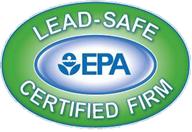 The RRP Rule requires that firms be certified with the EPA before offering or performing work that falls under the rule. This fact is clearly stated in the rule and further explained in the FAQ section of the EPA website. The rule also says that the EPA has up to 90 days to process firm applications. Apparently, even though many businesses will be required to follow the RRP rule in its entirety, the EPA can decide which part(s) of the rule they will follow, or not. In the letter, the EPA justifies not following the requirements of the RRP Rule in regards to the firm certification requirement as follows:
The RRP Rule requires that firms be certified with the EPA before offering or performing work that falls under the rule. This fact is clearly stated in the rule and further explained in the FAQ section of the EPA website. The rule also says that the EPA has up to 90 days to process firm applications. Apparently, even though many businesses will be required to follow the RRP rule in its entirety, the EPA can decide which part(s) of the rule they will follow, or not. In the letter, the EPA justifies not following the requirements of the RRP Rule in regards to the firm certification requirement as follows:
"The certification requirement is important to making sure that firms are protecting children and other residents while renovations are ongoing, but EPA does not wish to disrupt ongoing renovations for those firms that submitted applications on time."
The letter indicates that EPA expects to review all firm applications filed by April 22nd by June, although they did not specify by when in June.
The letter also makes it clear that the EPA will be enforcing the work practices and training requirements.
work practices and training requirements.
Click here to see which companies in your area are on the EPA's certified firms list
On another note, the EPA did announce that the opt-out provision would be phased out and that it is proposing to add third party dust wipe testing. The change in the rule regarding the opt-out will become effective 60 days after publication in the Federal Register. Click here for more on the opt-out and the proposed dust-wipe testing.
Topics: EPA RRP Lead Rules, Legal Considerations, Work Practices, Firm Certification, Enforcement and Inspections
How much will it cost contractors to comply with the EPA RRP Rule?
Posted by Shawn McCadden on Tue, Apr 20, 2010 @ 10:06 AM
How much will it cost contractors to comply with the Renovation, Repair, and Painting (EPA RRP) Rule?
 First, there are up-front costs including firm certification (required to offer, sell and or be under contract to perform the work) and the cost of Certified Renovator training for those doing and or supervising the actual work. Other up front costs can include tools and equipment needed to perform the work including a HEPA vacuum, cleaning equipment, personal protection equipment for workers, specialized tools and containment related equipment such as products like Zip Walls.
First, there are up-front costs including firm certification (required to offer, sell and or be under contract to perform the work) and the cost of Certified Renovator training for those doing and or supervising the actual work. Other up front costs can include tools and equipment needed to perform the work including a HEPA vacuum, cleaning equipment, personal protection equipment for workers, specialized tools and containment related equipment such as products like Zip Walls.
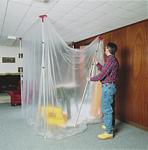
There will also be job related costs specific to the kind of work performed. Examples could include additional labor, tape, plastic sheeting, cleaning solutions, sprayers, staples, disposable wipes, HEPA filters, trash bags, tack pads, etc. Click here to request a tools and supplies shopping list. Contractors will need to consider new estimating categories/divisions as well as matching job costing categories to help verify and or improved estimated cost assumptions. Time cards and labor tracking codes should also be considered.
Contractors should also be aware of related overhead costs. These costs could include employee time to fill out and maintain required documentation, training of non-certified workers, delivery and documentation of pre-education materials, marketing and sales related expenses, time trying to get answers from the EPA, recertification costs, employee health testing, updating contracts, legal advice, insurance costs, continuing education, law suits, etc.
Contractors should devise ways to separate out EPA RRP related job costs and overhead expenses within their financial system in a way that gives them the ability to determine how RRP related compliance affects their costs of doing business.
Here is how the EPA answers this question:
"Information collected by EPA for the purposes of the rulemaking indicates that many contractors already follow some of the work practices required by the rule, such as using disposable plastic sheeting to cover floors and objects in the work area. These estimates do not include the costs of those practices.
EPA estimates that the costs of containment, cleaning, and cleaning verification will range from $8 to $167 per job, with the exception of those exterior jobs where vertical containment would be required. This includes:
· Costs of equipment (for example, plastic sheeting, tape, HEPA vacuums and tool shrouds - the equipment varies by job).
· Costs of labor (for example, the time required to perform cleaning and cleaning verification).
In addition to work practice costs, your costs will include training fees and certification fees. The costs include:
· Training costs to individual renovators working in pre-1978 housing or child-occupied facilities who must take a course from an accredited training provider (cost is set by the training provider; estimated to be about $200 for a 5-year certification).
· Certification costs to firms to obtain certification from EPA ($300 fee to the U.S. Treasury for a 5-year certification. (This fee is required by law to cover program administration)."
Topics: Business Financials, RRP Questions, Legal Considerations, Estimating Considerations, Business Considerations, Tools and Supplies
Can the Renovate Right Brochure be delivered via -mail?
Posted by Shawn McCadden on Sat, Apr 17, 2010 @ 04:07 PM
Question:
Is an electronic version of the lead information pamphlet sent to the customer via e-mail an acceptable means of distributing the information?
 According to the EPA web site:
According to the EPA web site:
"The distribution of the lead information pamphlet(required under the EPA RRP Rule) (40 CFR § 745.83) via e-mail is an acceptable means of distributing the pamphlet as long as the requirements of the Electronic Signatures in Global and National Commerce Act ("Act") (15 U.S.C. § 7001 et seq.) are met. The Act requires that the recipient of the pamphlet, among other things, consents electronically to email delivery and in a manner that demonstrates that the recipient can access the information in the form it will be provided. In addition, the recipient must be allowed to withdraw this consent and be informed of the procedures for withdrawing consent. Further, the recipient must be provided with a statement of the hardware and software requirements for accessing and retaining the pamphlet."
Click here for a lay person's explanation of what is required from Wikipedia
Click here to view and or download a PDF of the Act
Click here to see how one contractor delivers it via a link on his web site.
Topics: EPA RRP Lead Rules, Legal Considerations, Notification Considerations, Compliance Options
Can I do RRP work if my firm is not a EPA Certified Firm yet?
Posted by Shawn McCadden on Sat, Apr 17, 2010 @ 03:43 PM
Question:
Will a renovator working for a firm that has submitted a certification application to EPA but has not received its certification be allowed to work on pre-1978 properties assuming compliance with all other requirement of the EPA RRP Rule?
According to the EPA web site:
"No. Beginning April 22, 2010, no firm may perform, offer, or claim to perform renovations covered by the RRP Rule without certification from EPA"
NOTE: If you are a Certified Renovator, acting as a subcontractor working for and being paid by a certified firm, you can work under the rule.
NOTE: The fine for working without firm certification is $37,500 per violation per day. Willful violation of the rule is subject to an additional fine of $37,000 and or prison time.
Topics: RRP Questions, EPA RRP Lead Rules, Legal Considerations, EPA RRP for Dummies, Firm Certification, Enforcement and Inspections
What is the "Opt-Out" provision of the EPA RRP Rule and when does it apply?
Posted by Shawn McCadden on Sat, Apr 17, 2010 @ 03:29 PM
Question:
What is the "opt-out" provision of the Renovation, Repair, and Painting (RRP) Rule and when does it apply?
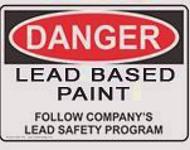 According to the Q&A area of the EPA's web site, before you can offer or do work on pre-1978 homes, you must be a Certified Firm (click here to see this Q&A). So, even if the work practices are not required, or the owner decides to opt-out, offering services or working on target properties requires that the contractor offering the contract to a property owner be a certified firm.
According to the Q&A area of the EPA's web site, before you can offer or do work on pre-1978 homes, you must be a Certified Firm (click here to see this Q&A). So, even if the work practices are not required, or the owner decides to opt-out, offering services or working on target properties requires that the contractor offering the contract to a property owner be a certified firm.
According to the EPA web site:
"The RRP Rule published April 22, 2008, allows homeowners to 'opt out' of the requirement to hire a trained renovator who follows the RRP work practices if the homeowner certifies that (1) the renovation will occur in the owner's residence, (2) no child under age 6 or pregnant women resides there, (3) the housing is not a child-occupied facility, and (4) the owner acknowledges that the renovation firm will not be required to use the work practices contained in the RRP rule."
NOTE: On April 23, 2010, the EPA announce that the opt-out provision would be phased out. The change in the rule regarding the opt-out will become effective on July 6th, 2010. Click here for more on the opt-out posted at the EPA Web Site.
 NOTE: Rhode Island is one of many states and or tribal authorities that has been granted and or is seeking authorization by the EPA to administer the RRP program. The opt-out provision is/will not be allowed in RI. If you know of the status of the opt-out in RI and or other states, please contribute that information along with a source/link to confirm accuracy.
NOTE: Rhode Island is one of many states and or tribal authorities that has been granted and or is seeking authorization by the EPA to administer the RRP program. The opt-out provision is/will not be allowed in RI. If you know of the status of the opt-out in RI and or other states, please contribute that information along with a source/link to confirm accuracy.
Click here to view or download the RI Regulations as a PDF
Topics: RRP Questions, RI Conciderations, EPA RRP Lead Rules, Sales Considerations, Legal Considerations, Work Practices, RRP for Dummies

 Home buyers, investors and realtors will likely drive awareness about lead and the new EPA RRP rule up. But, at the same time, such awareness will drive the values of pre-1978 properties down. If unaware of the additional considerations of risks, liability and costs related to the RRP, realtors will likely walk into a hornet’s nest.
Home buyers, investors and realtors will likely drive awareness about lead and the new EPA RRP rule up. But, at the same time, such awareness will drive the values of pre-1978 properties down. If unaware of the additional considerations of risks, liability and costs related to the RRP, realtors will likely walk into a hornet’s nest. 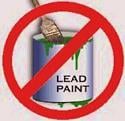 A buyer’s willingness to purchase a property that contains lead will definitely be effected as a result of the RRP rule. First, once word gets out, the health risks of lead paint and related liabilities will cause many buyers to bypass any consideration of pre-1978 properties. As the supply goes up, the prices of these properties will go down. Also, investors won’t like the added costs of owning such properties, particularly if the value of those properties is less likely to increase over time as compared to properties without lead. This too will lower property values to a point where the value of certain properties may only be in the land they sit on, less the cost to get rid of the original lead infused structure.
A buyer’s willingness to purchase a property that contains lead will definitely be effected as a result of the RRP rule. First, once word gets out, the health risks of lead paint and related liabilities will cause many buyers to bypass any consideration of pre-1978 properties. As the supply goes up, the prices of these properties will go down. Also, investors won’t like the added costs of owning such properties, particularly if the value of those properties is less likely to increase over time as compared to properties without lead. This too will lower property values to a point where the value of certain properties may only be in the land they sit on, less the cost to get rid of the original lead infused structure.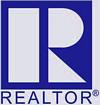 As a side note, realtors as a whole are typically much more professional and proactive than contractors. The majority of them are also dues paying members of one single, well funded and very powerful trade association that represents their interests. I predict that once a good number of realtors catch wind of and understand how the RRP will affect their industry; their association will be working to modify the rule in their favor. This might be of benefit to renovators, but just as easily, it might not.
As a side note, realtors as a whole are typically much more professional and proactive than contractors. The majority of them are also dues paying members of one single, well funded and very powerful trade association that represents their interests. I predict that once a good number of realtors catch wind of and understand how the RRP will affect their industry; their association will be working to modify the rule in their favor. This might be of benefit to renovators, but just as easily, it might not.





